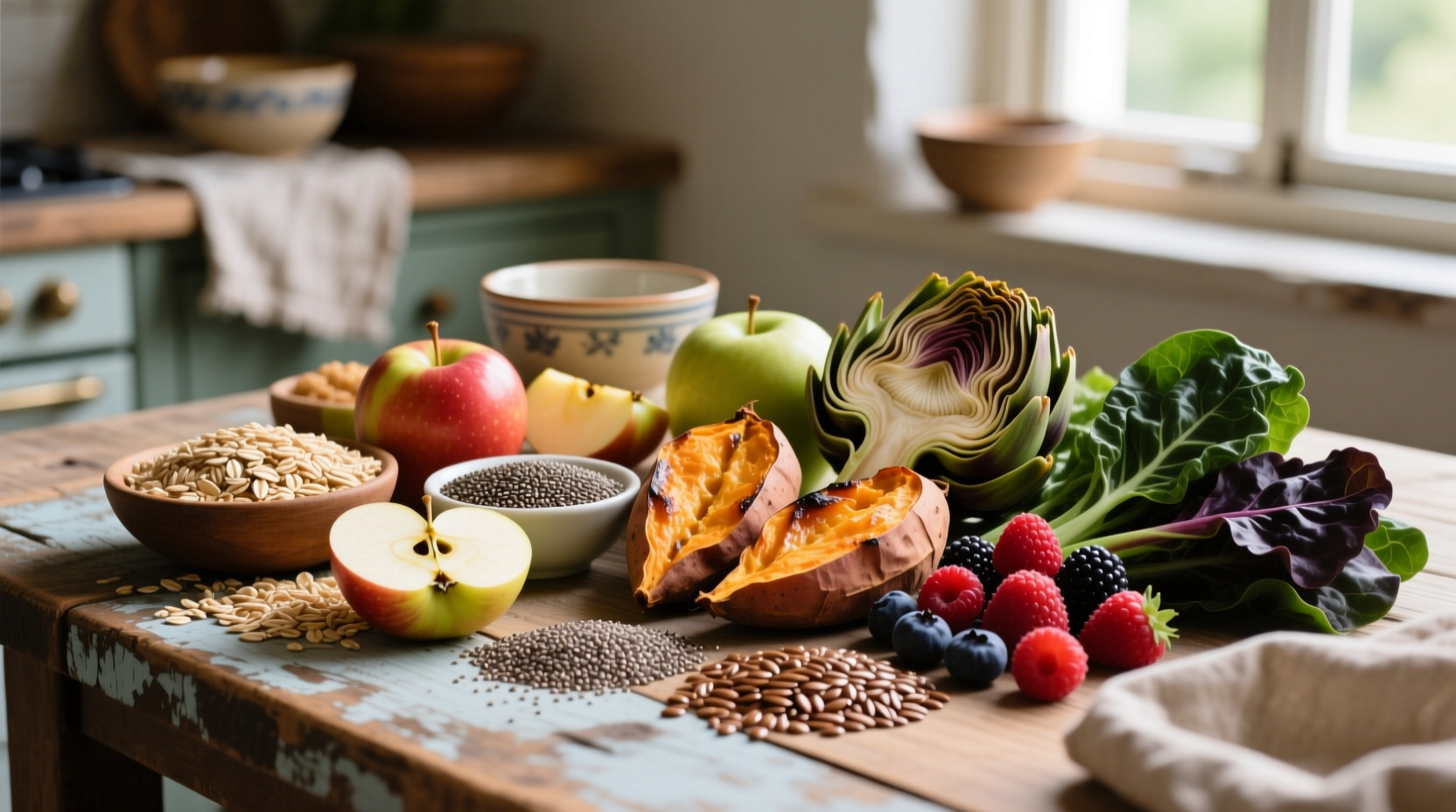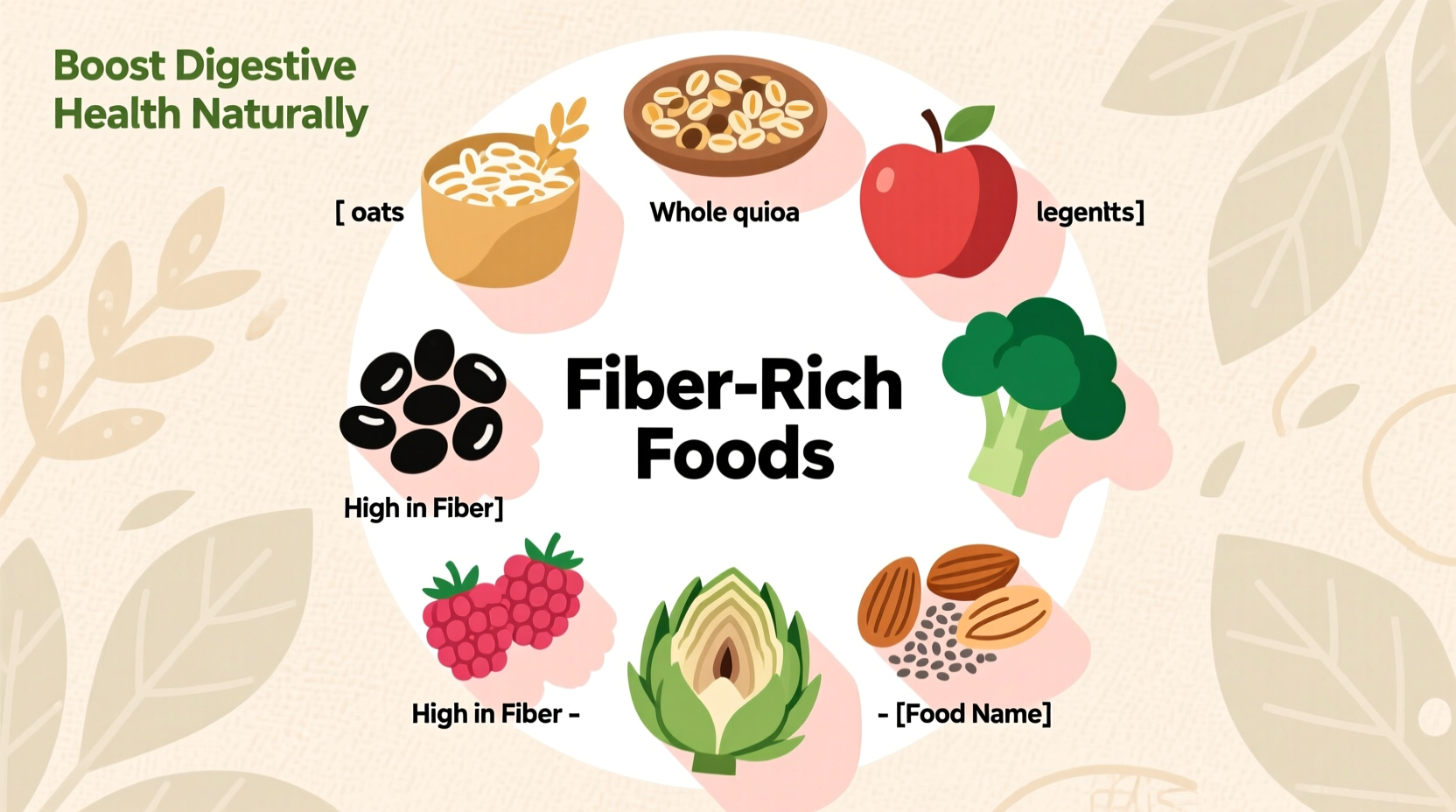Discover exactly which foods deliver the most dietary fiber per serving and how to incorporate them into your daily meals for optimal health benefits. This guide provides scientifically backed information on high-fiber foods with precise measurements, practical implementation strategies, and important considerations for different dietary needs.
Why Fiber Matters for Your Health
Fiber plays a crucial role in maintaining digestive health, regulating blood sugar levels, and supporting heart health. According to the National Heart, Lung, and Blood Institute, adequate fiber intake can reduce the risk of heart disease by up to 30%. Unlike other carbohydrates, fiber passes through your digestive system relatively intact, providing bulk that helps prevent constipation while feeding beneficial gut bacteria.
Research published in The Lancet shows that people consuming 25-29g of fiber daily have a 15-30% lower risk of premature death from heart disease, stroke, type 2 diabetes, and colorectal cancer compared to those with lower fiber intake. The benefits increase with higher consumption up to 38g per day.
Daily Fiber Requirements by Age and Gender
The Institute of Medicine established fiber intake recommendations that vary by age and gender. These guidelines have remained consistent since the 2005 Dietary Guidelines for Americans, reflecting the strong scientific consensus on optimal fiber consumption:
| Age Group | Men (grams/day) | Women (grams/day) |
|---|---|---|
| 19-50 years | 38 | 25 |
| 51+ years | 30 | 21 |
Most Americans consume only 15g of fiber daily—less than half the recommended amount. Gradually increasing your intake while drinking adequate water prevents digestive discomfort as your system adjusts.
Top High-Fiber Foods Categorized by Type
Fruits Rich in Fiber
Fruits provide both soluble and insoluble fiber along with essential vitamins and antioxidants. The fiber content varies significantly between fresh, frozen, and dried varieties:
- Raspberries (8g per cup) - Highest fiber content among common fruits
- Pears with skin (5.5g per medium fruit) - Excellent source of both fiber types
- Apples with skin (4.4g per medium fruit) - Pectin content supports gut health
- Bananas (3.1g per medium fruit) - More fiber when slightly green
- Avocados (10g per cup) - Technically a fruit with exceptional fiber density
Vegetables Packed with Fiber
Vegetables offer substantial fiber content while being low in calories. Cooking methods affect fiber availability—steaming preserves more fiber than boiling.
- Artichokes (10.3g per medium vegetable) - Highest fiber vegetable per serving
- Green peas (8.8g per cooked cup) - Complete protein source when combined with grains
- Broccoli (5.1g per cooked cup) - Contains both soluble and insoluble fiber
- Brussels sprouts (6.4g per cooked cup) - Best roasted to preserve fiber content
- Spinach (4.3g per cooked cup) - Volume reduces significantly when cooked
Legumes: The Fiber Powerhouses
Legumes consistently rank as the highest fiber foods available. One cup of cooked legumes typically provides 12-16g of fiber—nearly half your daily requirement.
| Legume (1 cup cooked) | Total Fiber (g) | Soluble Fiber (g) |
|---|---|---|
| Lentils | 15.6 | 5.2 |
| Split peas | 16.3 | 5.4 |
| Black beans | 15.0 | 5.0 |
| Chickpeas | 12.5 | 4.2 |
Source: USDA FoodData Central (accessed September 2025)
Whole Grains That Boost Your Fiber Intake
Whole grains retain all parts of the grain kernel, providing significantly more fiber than refined grains. When shopping, look for "100% whole grain" as the first ingredient.
- Barley (pearled) (6g per cooked cup) - Highest fiber among common grains
- Oats (4g per ½ cup dry) - Contains beta-glucan for heart health
- Quinoa (5g per cooked cup) - Complete protein with all essential amino acids
- Brown rice (3.5g per cooked cup) - Only marginally more fiber than white rice
- Whole wheat pasta (6.3g per cooked cup) - Check labels as fiber content varies
Nuts and Seeds: Concentrated Fiber Sources
Nuts and seeds pack substantial fiber into small portions. They also provide healthy fats and protein, making them excellent snacks that promote satiety.
- Chia seeds (10g per ounce) - Forms gel when mixed with liquid for added fullness
- Flaxseeds (ground) (7.6g per ounce) - Must be ground for proper absorption
- Almonds (3.5g per ounce) - Also rich in vitamin E and magnesium
- Pumpkin seeds (5.2g per ounce) - Excellent source of zinc and magnesium
- Sunflower seeds (3.9g per ounce) - Best raw or dry roasted without salt

Soluble vs. Insoluble Fiber: Understanding the Difference
Not all fiber functions the same way in your body. Understanding these two types helps you create balanced meals that maximize health benefits:
- Soluble fiber dissolves in water to form a gel-like substance. It slows digestion, helping you feel full longer and stabilizing blood sugar. Found in oats, beans, lentils, apples, and citrus fruits.
- Insoluble fiber adds bulk to stool and speeds material through your digestive tract. Essential for preventing constipation. Found in whole wheat flour, wheat bran, nuts, and vegetables like cauliflower and potatoes.
Ideally, your diet should contain both types. Most plant foods contain a combination, but in varying proportions. For example, beans contain about 1:3 soluble to insoluble fiber ratio, while whole grains tend to have more insoluble fiber.
Practical Strategies to Increase Your Fiber Intake
Simply knowing which foods are high in fiber isn't enough—you need actionable strategies to incorporate them into your daily routine. These evidence-based approaches help you reach your fiber goals without digestive discomfort:
Start Your Day with Fiber
Choose a high-fiber breakfast that provides at least 8-10g of fiber. Options include:
- Oatmeal topped with berries and chia seeds (12g fiber)
- Whole grain toast with avocado and flaxseeds (14g fiber)
- Smoothie with spinach, banana, and ground flaxseed (10g fiber)
Smart Swaps for Common Foods
Small substitutions throughout your day significantly increase fiber without changing your eating habits:
- Replace white rice with barley or quinoa (doubles fiber content)
- Choose whole fruit instead of juice (adds 3-4g fiber per serving)
- Add beans to soups and salads (adds 7-10g fiber per cup)
- Use whole wheat pasta instead of regular (adds 3g fiber per serving)
Avoid Common Fiber Mistakes
Many people experience digestive issues when increasing fiber because they make these common errors:
- Increasing too quickly - Add 5g per day weekly until reaching target
- Not drinking enough water - Fiber needs water to move through your system
- Relying only on supplements - Whole foods provide additional nutrients
- Focusing only on one type - Balance soluble and insoluble sources
Individuals with irritable bowel syndrome (IBS) or inflammatory bowel disease (IBD) should work with a dietitian to determine appropriate fiber types and amounts, as certain fibers may exacerbate symptoms.
When More Fiber Isn't Better: Important Considerations
While most people need more fiber, certain medical conditions require careful fiber management. Understanding these context boundaries prevents potential health issues:
- Diverticulitis flare-ups - During acute episodes, a low-fiber diet is recommended
- Crohn's disease - Fiber tolerance varies significantly between individuals
- Post-surgical recovery - Temporary low-fiber diet may be necessary
- Medication interactions - High fiber can reduce absorption of certain medications
Always consult your healthcare provider before making significant dietary changes if you have digestive disorders or take medications regularly.
High-Fiber Meal Planning Made Simple
Create balanced, fiber-rich meals using this simple formula that ensures you get both soluble and insoluble fiber throughout the day:
- Include at least one high-fiber vegetable at both lunch and dinner
- Add legumes to at least one meal daily (½ to 1 cup)
- Choose whole fruits over juice for snacks
- Replace refined grains with whole grains in at least two meals
- Add seeds or nuts to salads, yogurt, or oatmeal
Sample day providing approximately 35g of fiber:
- Breakfast: Oatmeal (½ cup dry) with 1 cup raspberries and 1 tbsp chia seeds (18g fiber)
- Lunch: Large salad with 2 cups spinach, ½ cup chickpeas, 1 medium pear, and pumpkin seeds (14g fiber)
- Dinner: 3 oz grilled chicken with 1 cup roasted Brussels sprouts and ½ cup quinoa (10g fiber)
This approach ensures consistent fiber intake without overwhelming your digestive system. Remember to increase water intake proportionally as you add more fiber to your diet.











 浙公网安备
33010002000092号
浙公网安备
33010002000092号 浙B2-20120091-4
浙B2-20120091-4